A BIRTHDAY TRIBUTE to one of comics’ greatest artists…
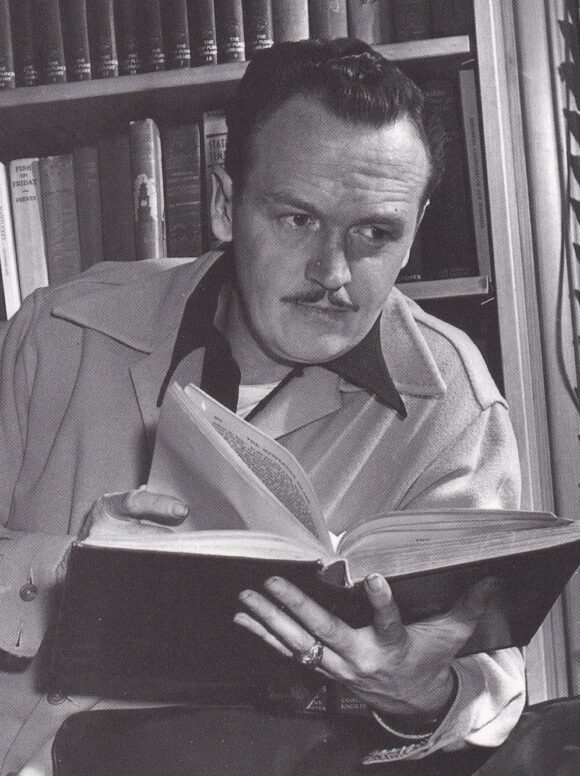
By PETER BOSCH
Alex Raymond, as we discussed last year for his birthday (October 2, 1909), was one of the most dynamic illustrators the comics world ever saw. His Flash Gordon and Jungle Jim were among the most beautiful strips to appear in Sunday newspapers of the 1930s and early 1940s. However, when he enlisted in 1944 during World War II, he had to leave the drawing of the strips to others. The drop in quality on Flash Gordon by his successor, Austin Briggs (who had been drawing the daily strip), was evident to him but he thought he would be able to fix that once the war ended and he returned to America. Unfortunately, the newspaper syndicate, King Features, had other ideas.
After honorably fulfilling his duty to the country, Raymond went back to take up where he left off… but the syndicate said they did not want to take Austin Briggs off Flash Gordon. Raymond was surprised and outraged. However, when he had co-created the strip in 1934, he had signed a work-for-hire contract and so they owned the strip and could do what they wanted with it. Raymond felt betrayed and he threatened to go to another newspaper syndicate and create competition for them. They wanted to keep Raymond producing strips for them, so he and they negotiated, with an outcome that he would create a brand new strip, which he would own and receive 60-40 of the proceeds. In addition, if the new strip didn’t succeed in a few years, King Features Syndicate would reinstate him on Flash Gordon.
In some ways, this turn of events was something that he had been thinking about, anyway… creating a strip of substance, based in the present-day real life of the 1940s, and not the fantasy world of a space adventurer. From this came Rip Kirby, about an ex-Marine (like Raymond) named Remington “Rip” Kirby who was a well-to-do respected amateur sleuth.
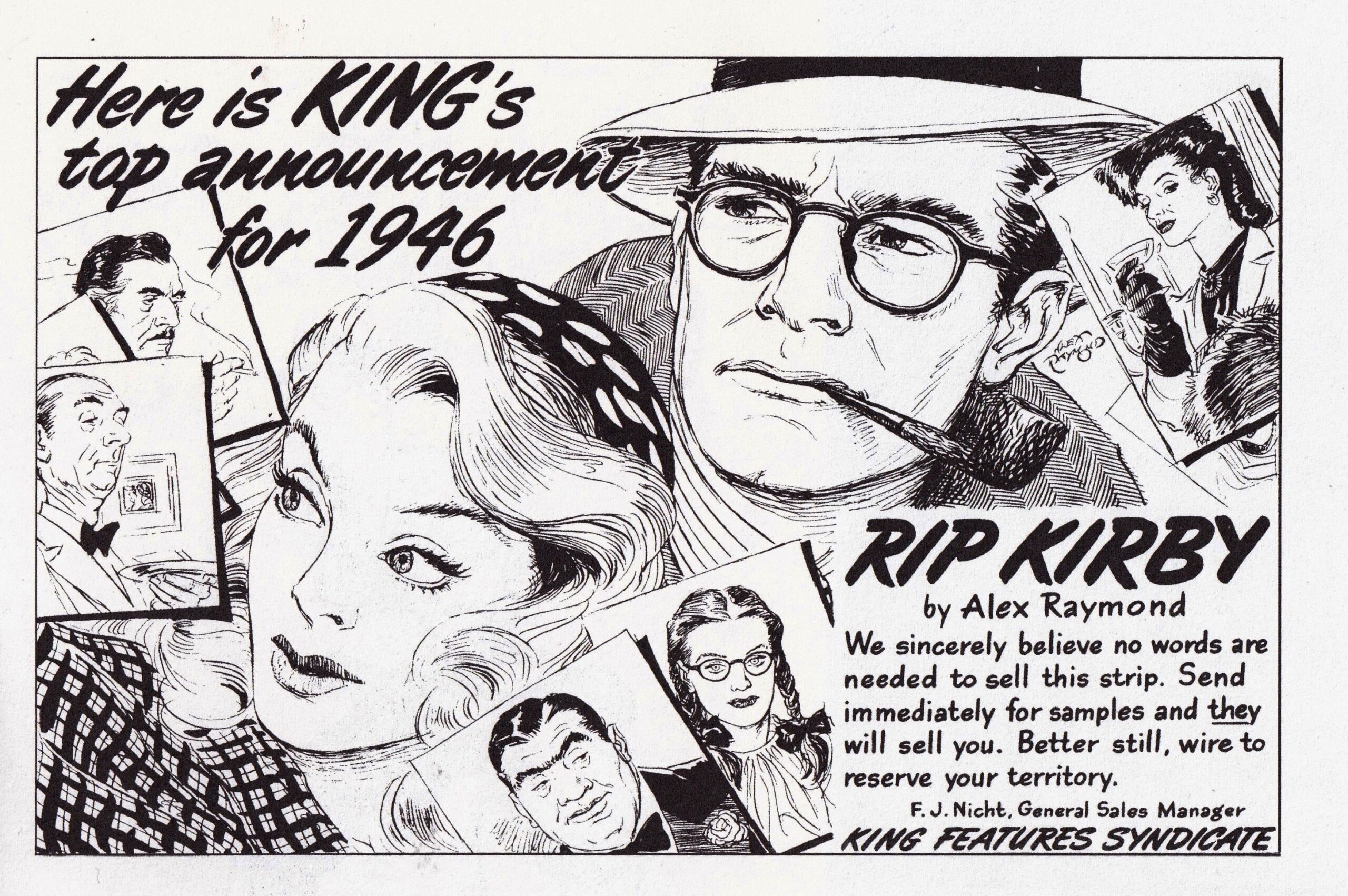
Promo for the new strip
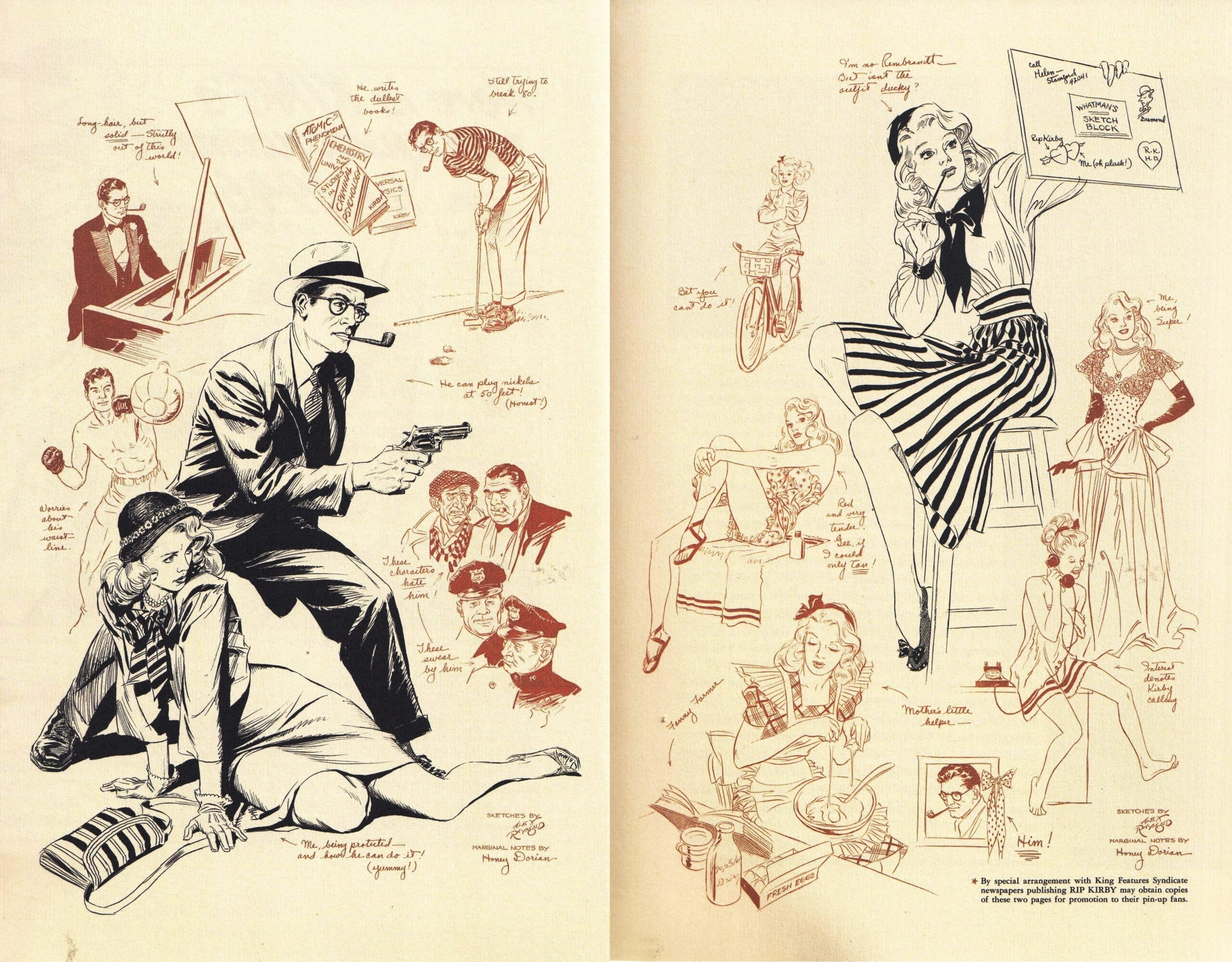
Promos for the new strip
Co-created with King Features’ General Manager Ward Greene (the idea for the Rip Kirby strip came from him) with writing by Greene and Raymond, the detective strip debuted March 4, 1946 – and it didn’t start slow!
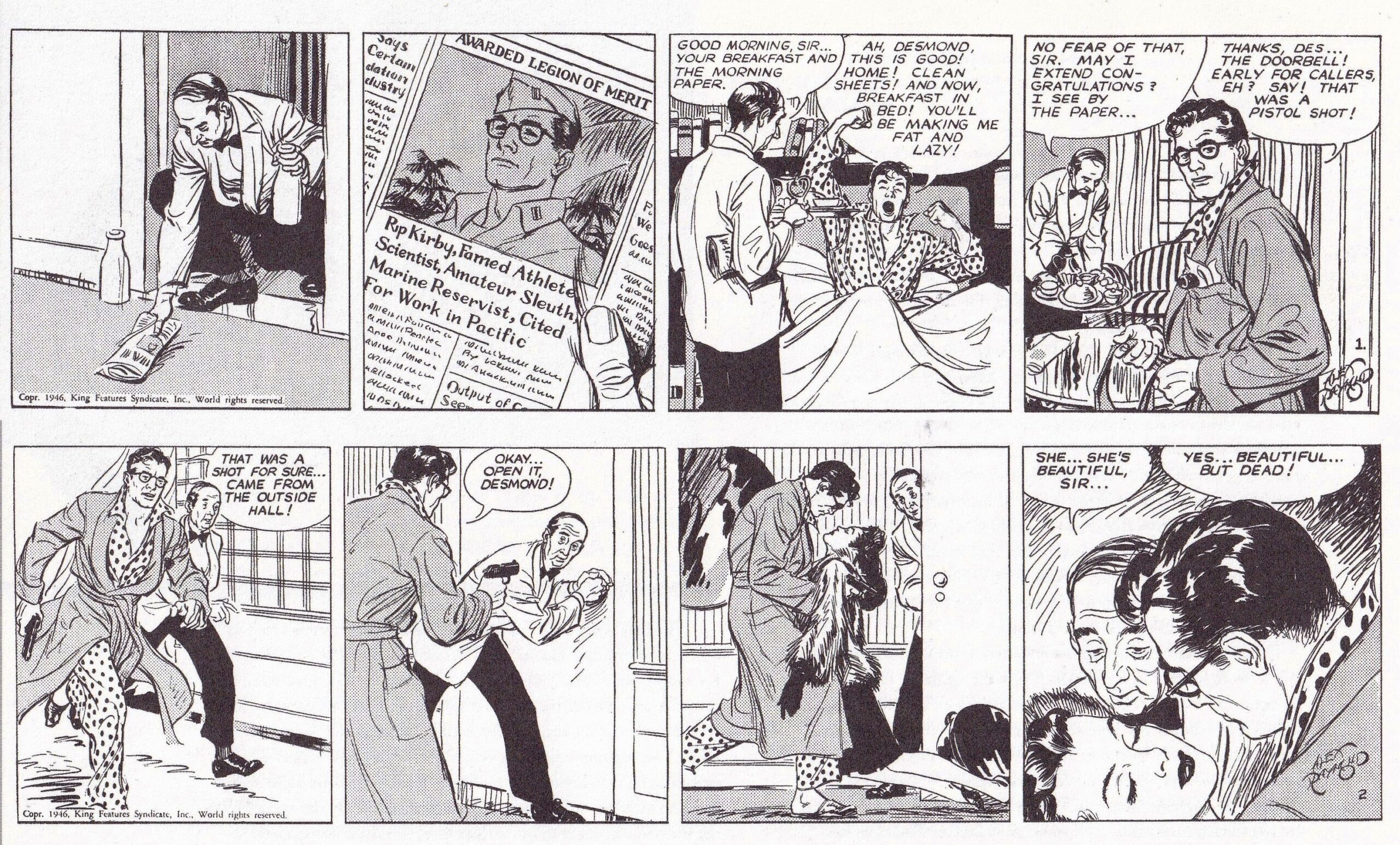
The first two Rip Kirby strips, March 4 and 5, 1946.
The strip quickly became an enormous success, with almost 150 newspapers publishing it before the end of the first year. And more than doubling that by the end of the third year.
Of course, it wasn’t just the stories that brought people to it (in the ’50s, Fred Dickenson replaced Greene as Raymond’s co-writer), but also the incredible artwork. Al Williamson aficionados are well acquainted with his being inspired by Raymond’s work on Flash Gordon, but Rip Kirby was also clearly a strong influence on Williamson’s Secret Agent Corrigan daily newspaper strip when he took over drawing it in the late 1960s. (Not coincidentally, Raymond co-created with Dashiell Hammett and drew that strip in 1934 when it was called Secret Agent X-9.) Compare these two sequences:
Alex Raymond’s Rip Kirby for December 13-15, 1954:
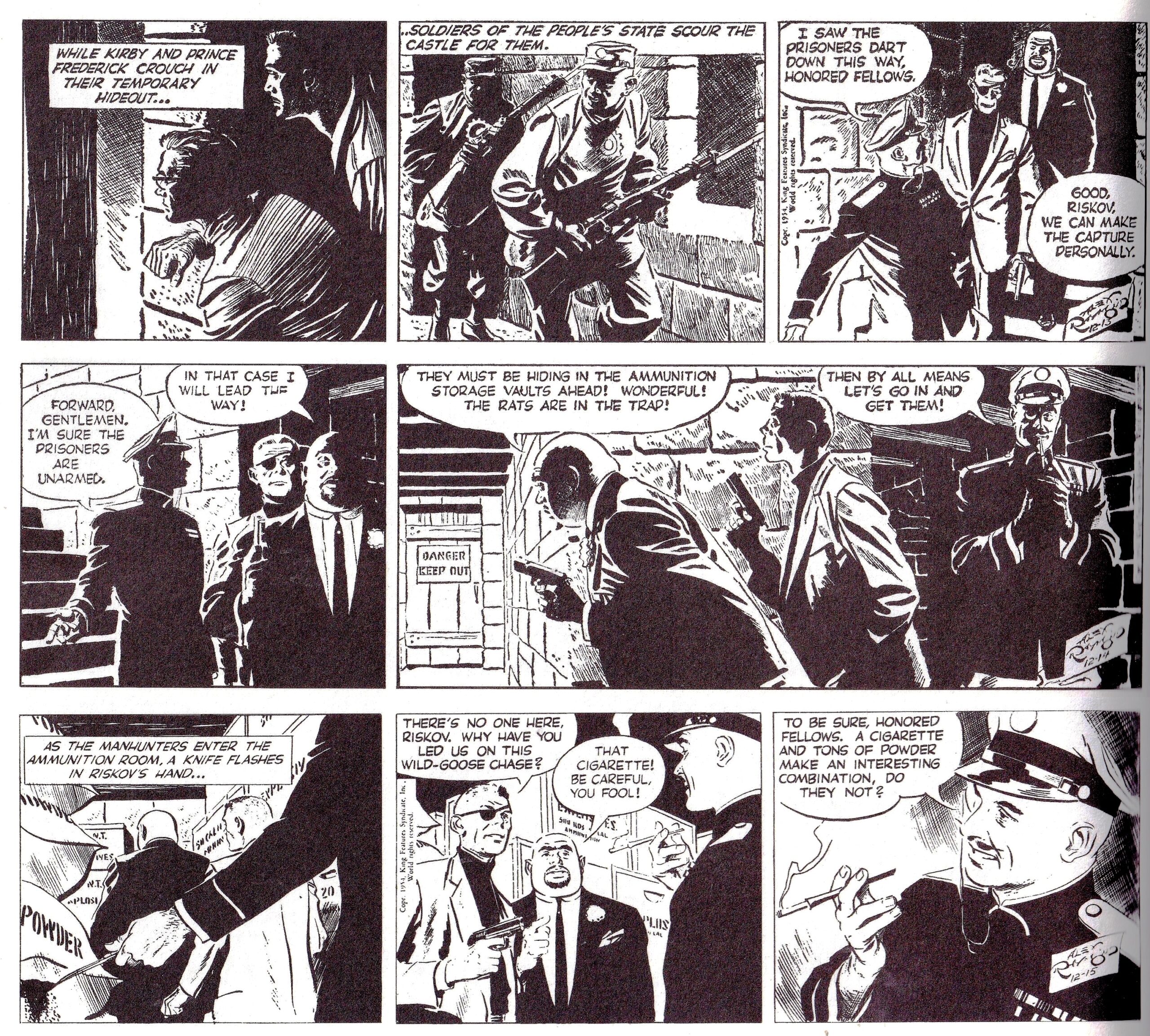
And this Secret Agent Corrigan dramatic moment by Williamson for December 10-12, 1968:
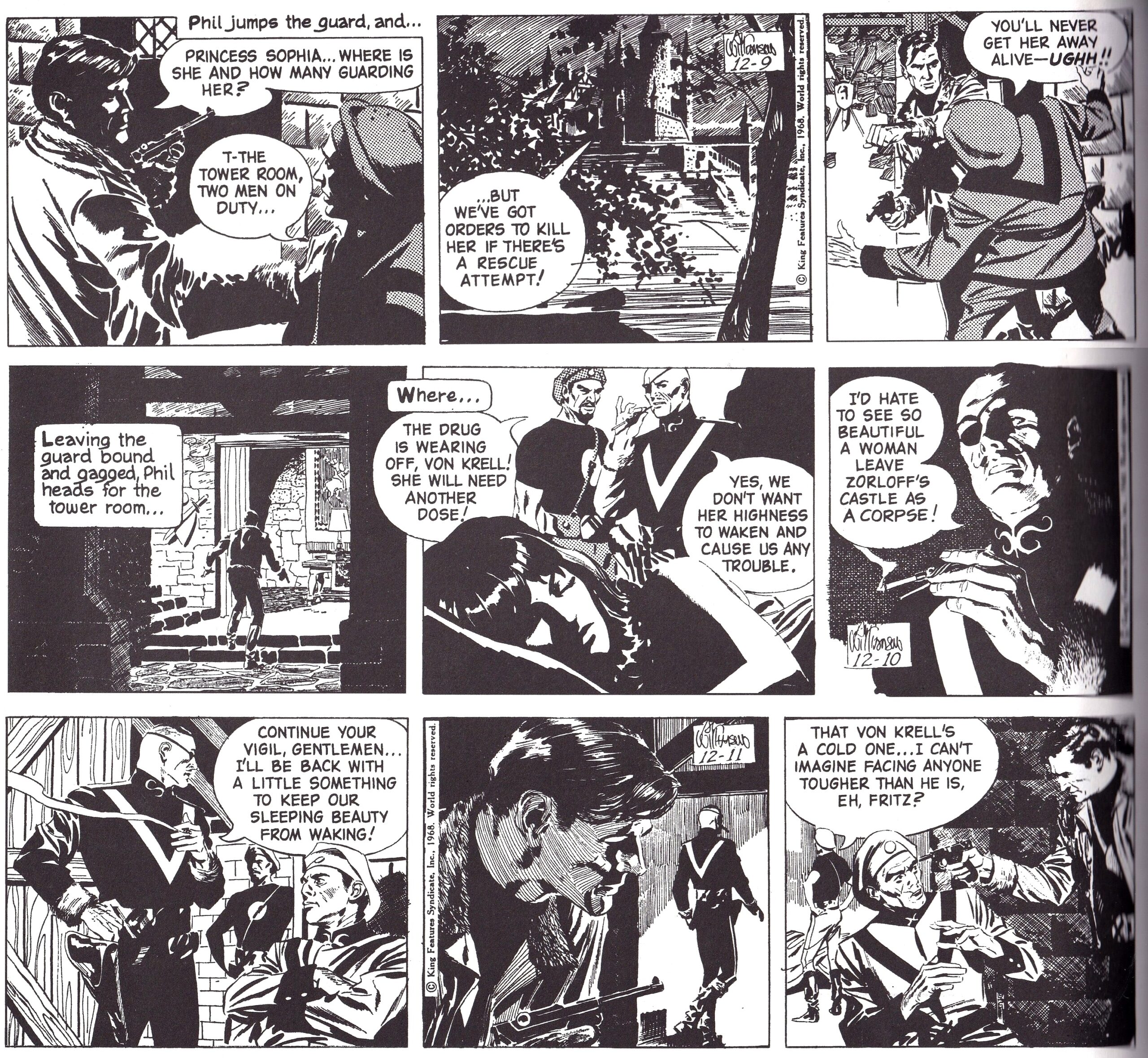
Each year, impossible as it is to believe, Raymond got better and better.
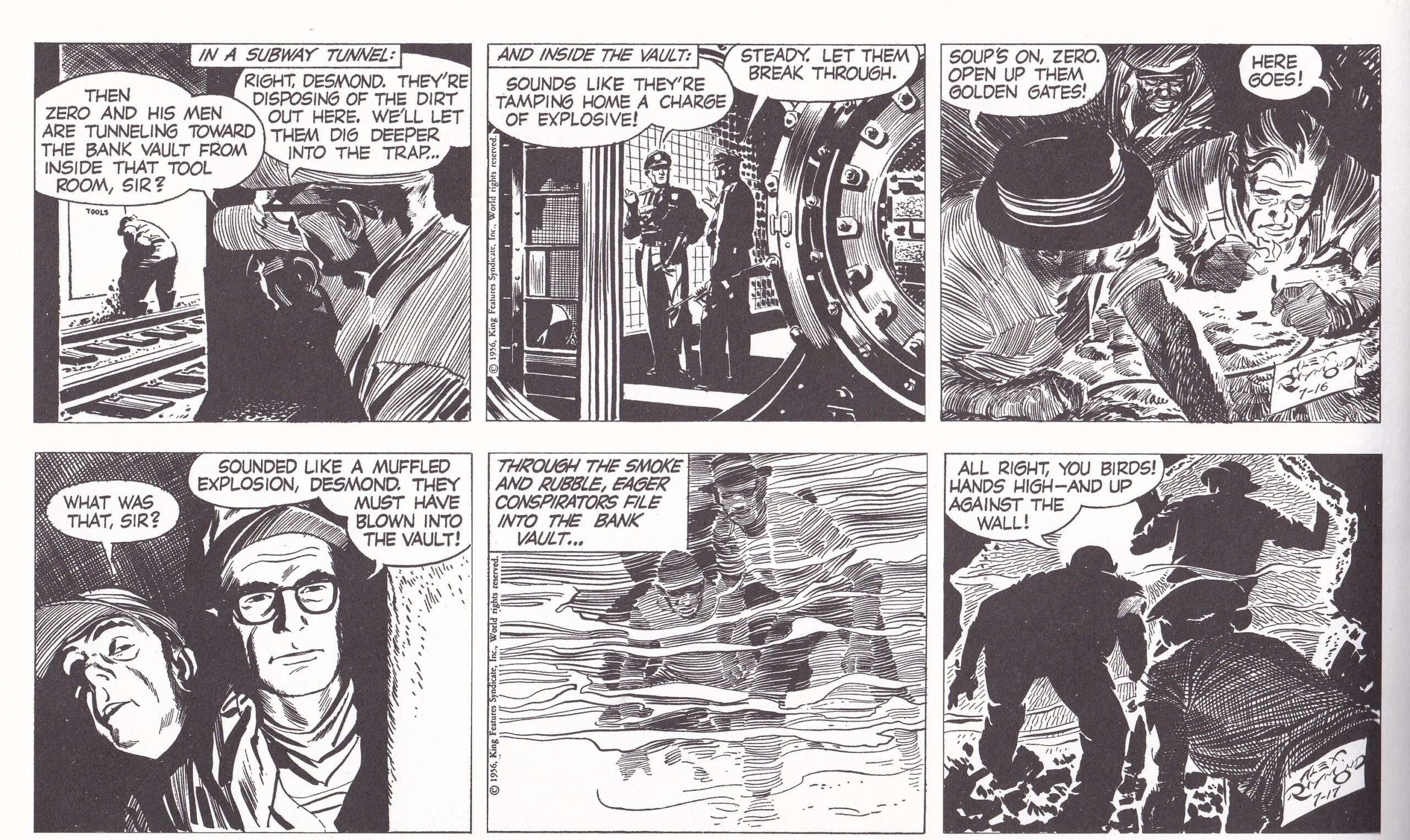
July 16 and 17, 1956
But then, on September 6, 1956, Alex Raymond lost his life in an automobile accident. He was only 46 years old. Below is the last Rip Kirby strip published with his artwork:

September 29, 1956
King Features Syndicate quickly hired John Prentice, whose style was similar to Raymond’s, to take over drawing the daily strip, which he did until his own death from mesothelioma in 1999. Rip Kirby came to an end June 26, 1999.
Over the decades since his death, Alex Raymond’s art has been an inspiration for many artists who followed, putting him in a league with just two other comics illustrators and influencers of the time, the great Hal Foster (Tarzan and Prince Valiant) and Milton Caniff (Terry and the Pirates and Steve Canyon).
—
MORE
— 13 Fabulous FLASH GORDON STRIPS: An ALEX RAYMOND Birthday Celebration. Click here.
— 13 Magnificent Illustrations: A HAL FOSTER Birthday Celebration. Click here.
—
13th Dimension contributor-at-large PETER BOSCH’s first book, American TV Comic Books: 1940s-1980s – From the Small Screen to the Printed Page, was published by TwoMorrows. A sequel, about movie comics, is coming soon. Peter has written articles and conducted celebrity interviews for various magazines and newspapers. He lives in Hollywood.
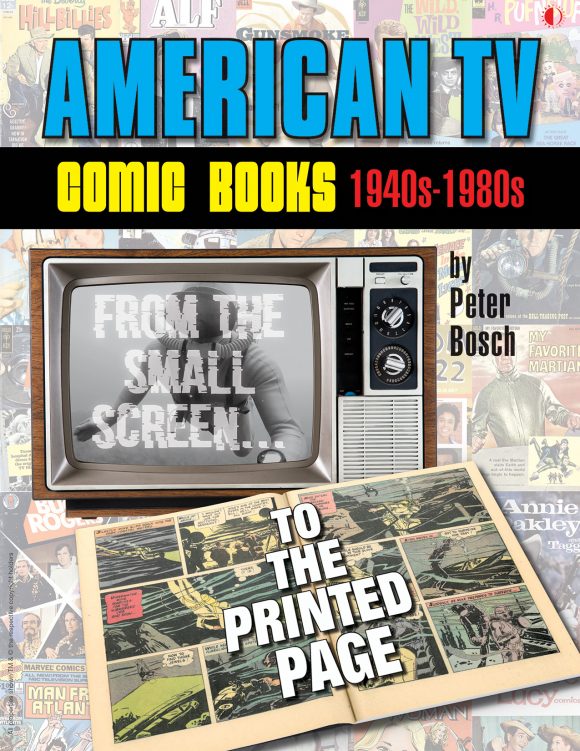

October 7, 2024
I had never seen Rip Kirby! Thank you!
October 7, 2024
“After honorably fulfilling his duty to the country, Raymond went back to take up where he left off… but the syndicate said they did not want to take Austin Briggs off Flash Gordon.”….so, wrong! There was certainly an undermining idea that was rampant in the publishing business especially where illustrators were involved to scr*w them over. You could almost do a “13 List of…” how creators have been shafted over the years.